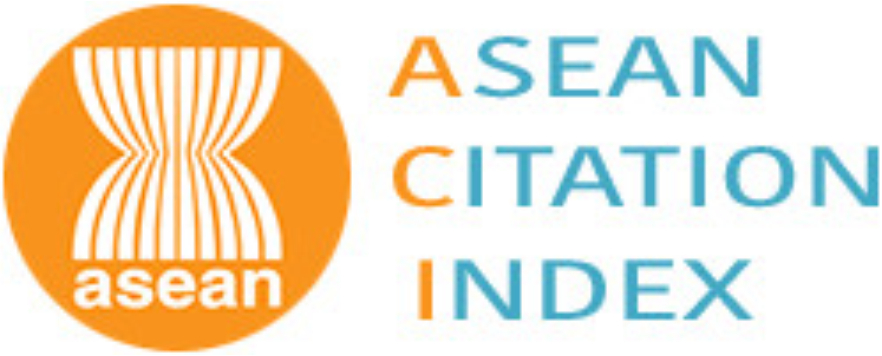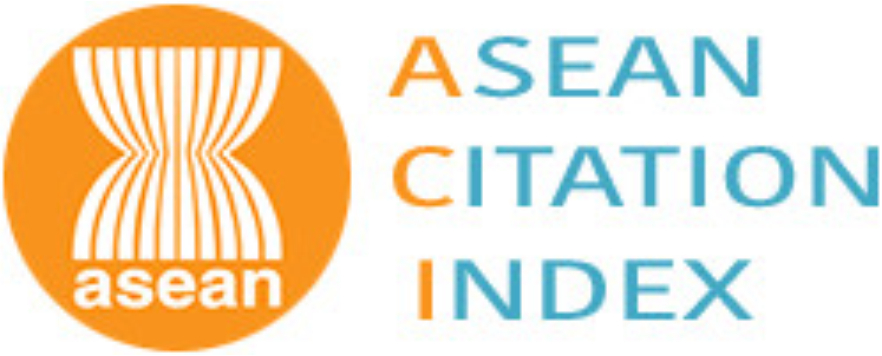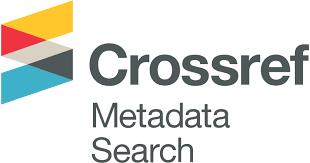Một phương pháp thiết kế hệ phân lớp dựa trên luật mờ sử dụng tập mờ dạng hàm s đảm bảo tính giải nghĩa được
Email:
nducdu@utc.edu.vn
Từ khóa:
Đại số gia tử, Thứ tự ngữ nghĩa, Hệ phân lớp, Tính giải nghĩa được, Hệ dựa trên luật mờ
Tóm tắt
Hệ dựa trên luật mờ có nhiều ứng dụng trong thực tiễn. Tuy nhiên, để trích rút được hệ luật ngắn gọn, có độ chính xác cao và đảm bảo tính giải nghĩa cần có phương pháp luận và kỹ thuật khác nhau, trong đó có phương pháp biểu diễn ngữ nghĩa của các từ ngôn ngữ trong cơ sở luật. Đại số gia tử cho phép tạo ra một cơ sở hình thức thiết kế ngữ nghĩa tính toán dựa trên tập mờ của các từ ngôn ngữ trong cơ sở luật từ ngữ nghĩa vốn có của chúng. Đã có nhiều nghiên cứu về phương pháp biểu diễn ngữ nghĩa tính toán dựa trên tập mờ đảm bảo tính giải nghĩa của hệ dựa trên luật mờ được đề xuất và được ứng dụng giải bài toán phân lớp và hồi quy. Các nghiên cứu đó cũng chỉ ra rằng, hình dạng của tập mờ ảnh hưởng đến độ chính xác hệ dựa trên luật mờ. Một phương pháp thiết kế cấu trúc đa ngữ nghĩa với tập mờ dạng hàm S đảm bảo tính giải nghĩa của hệ phân lớp theo qua điểm của Tarski được trình bày trong bài báo này. Kết quả thực nghiệm với 15 tập dữ liệu chuẩn phát sinh trong thực tiễn cho thấy phương pháp được đề xuất cho độ chính xác phân lớp tốt hơn trong khi không làm tăng độ phức tạp của hệ luật so với các phương pháp đã được công bốTài liệu tham khảo
[1]. R. Alcala, Y. Nojima, F. Herrera, H. Ishibuchi, Multi-objective genetic fuzzy rule selection of single granularity-based fuzzy classification rules and its interaction with the lateral tuning of membership functions, Soft Computing, 15 (2011) 2303–2318. https://doi.org/10.1007/s00500-010-0671-2
[2]. N. N. Quynh, N. P. Dong, N. L. Giang, H. V. Long, A new Takagi-Sugeno fuzzy system approach for fuzzy state feedback controller design and its application to malware propagation on heterogeneous complex network, Journal of Science and Technology on Information Security, 3 (2023) 43-53. https://doi.org/10.54654/isj.v3i20.988
[3]. H. Ishibuchi, T. Yamamoto, Fuzzy Rule Selection by Multi-Objective Genetic Local Search Algorithms and Rule Evaluation Measures in Data Mining, Fuzzy Sets and Systems, 141 (2004) 59-88. https://doi.org/10.1016/S0165-0114(03)00114-3
[4]. H. Ishibuchi, T. Yamamoto, Rule weight specification in fuzzy rule-based classification systems, IEEE Transactions on Fuzzy Systems, 13 (2005) 428–435. https://doi.org/10.1109/TFUZZ.2004.841738
[5]. C. H. Nguyen, V. T. Hoang, V. L. Nguyen, A discussion on interpretability of linguistic rule based systems and its application to solve regression problems, Knowledge-Based Systems, 88 (2015) 107–133. https://doi.org/10.1016/j.knosys.2015.08.002
[6]. V. T. Hoang, C. H. Nguyen, D. D. Nguyen, D. P. Pham, V. L. Nguyen, The interpretability and scalability of linguistic-rule-based systems for solving regression problems, International Journal of Approximate Reasoning, 149 (2022) 131-160. https://doi.org/10.1016/j.ijar.2022.07.007
[7]. D. D. Nguyen, D. P. Pham, V. T. Hoang, C. H. Nguyen, Một phương pháp xây dựng hệ dựa trên luật mờ có khả năng mở rộng giải bài toán hồi quy, Tạp chí Khoa học và Công nghệ - Đại học Thái Nguyên, 226 (2021) 341-348. https://doi.org/10.34238/tnu-jst.4811
[8]. M. I. Rey, M. Galende, M. J. Fuente, G. I. Sainz-Palmero, Multi-objective based Fuzzy Rule Based Systems (FRBSs) for trade-off improvement in accuracy and interpretability: A rule relevance point of view, Knowledge-Based Systems, 127 (2017) 67–84. https://doi.org/10.1016/j.knosys.2016.12.028
[9]. M. Pota, M. Esposito, G. D. Pietro, Designing rule-based fuzzy systems for classification in medicine, Knowledge-Based Systems, 124 (2017) 105–132. https://doi.org/10.1016/j.knosys.2017.03.006
[10]. C. Mencar, A.M. Fanelli, Interpretability constraints for fuzzy information granulation, Information Sciences, 178 (2008) 4585–4618. https://doi.org/10.1016/j.ins.2008.08.015
[11]. C. H. Nguyen, W. Wechler, Hedge algebras: an algebraic approach to structures of sets of linguistic domains of linguistic truth variables, Fuzzy Sets and Systems, 35 (1990) 281-293. https://doi.org/10.1016/0165-0114(90)90002-N
[12]. C. H. Nguyen, W. Wechler, Extended hedge algebras and their application to fuzzy logic, Fuzzy Sets and Systems, 52 (1992) 259–281. https://doi.org/10.1016/0165-0114(92)90237-X
[13]. C. H. Nguyen, V. L. Nguyen, Fuzziness measure on complete hedges algebras and quantifying semantics of terms in linear hedge algebras, Fuzzy Sets and Systems, 158 (2007) 452-471. https://doi.org/10.1016/j.fss.2006.10.023
[14]. A. Tarski, A. Mostowski, and R. Robinson, Undecidable Theories. North-Holland, 1953.
[15]. D. P. Pham, V. T. Hoang, D. D. Nguyen, Biểu diễn ngữ nghĩa tính toán đảm bảo tính giải nghĩa của hệ phân lớp dựa trên luật mờ, Tạp chí Khoa học và Công nghệ - Đại học Thái Nguyên, 227 (2022) 107 - 114. https://doi.org/10.1016/j.knosys.2014.04.047
[16]. C. H. Nguyen, T. S. Tran, D. P. Pham, Modeling of a semantics core of linguistic terms based on an extension of hedge algebra semantics and its application, Knowledge-Based Systems, 67 (2014) 244–262. https://doi.org/10.1016/j.knosys.2014.04.047
[17]. C. H. Nguyen, W. Pedrycz, T. L. Duong, T. S. Tran, A genetic design of linguistic terms for fuzzy rule based classifiers, International Journal of Approximate Reasoning, 54 (2013) 1-21. https://doi.org/10.1016/j.ijar.2012.07.007
[18]. V. T. Hoang, D. D. Nguyen, C. H. Nguyen, Một phương pháp thiết kế ngữ nghĩa dạng tập mờ của từ ngôn ngữ dựa trên đại số gia tử mở rộng và ứng dụng xây dựng FRBS giải bài toán hồi qui, Chuyên san Các công trình nghiên cứu, phát triển và ứng dụng Công nghệ Thông tin và Truyền thông, 38 (2017) 51-57. https://doi.org/10.32913/rd-ict.vol2.no38.527
[19]. D. D. Nguyen, D. P. Pham, D. V. Pham, D. T. Nguyen, Một phương pháp thiết kế ngữ nghĩa tính toán của các từ ngôn ngữ giải bài toán phân lớp dựa trên luật mờ, Chuyên san Các công trình nghiên cứu, phát triển và ứng dụng Công nghệ Thông tin và Truyền thông, 1 (2020) 9-18. https://doi.org/10.32913/mic-ict-research-vn.v2020.n1.914
[20]. J. Demˇsar, Statistical Comparisons of Classifiers over Multiple Data Sets, Journal of Machine Learning Research, 7 (2006) 1–30.
[21]. D. P. Pham, C. H. Nguyen, T. T. Nguyen, Multi-objective Particle Swarm Optimization Algorithm and its Application to the Fuzzy Rule Based Classifier Design Problem with the Order Based Semantics of Linguistic Terms, In Proceedings of the 10th IEEE RIVF International Conference on Computing and Communication Technologies (RIVF-2013), Hanoi, Vietnam 2013, 12–17. https://doi.org/10.1109/RIVF.2013.6719858
[2]. N. N. Quynh, N. P. Dong, N. L. Giang, H. V. Long, A new Takagi-Sugeno fuzzy system approach for fuzzy state feedback controller design and its application to malware propagation on heterogeneous complex network, Journal of Science and Technology on Information Security, 3 (2023) 43-53. https://doi.org/10.54654/isj.v3i20.988
[3]. H. Ishibuchi, T. Yamamoto, Fuzzy Rule Selection by Multi-Objective Genetic Local Search Algorithms and Rule Evaluation Measures in Data Mining, Fuzzy Sets and Systems, 141 (2004) 59-88. https://doi.org/10.1016/S0165-0114(03)00114-3
[4]. H. Ishibuchi, T. Yamamoto, Rule weight specification in fuzzy rule-based classification systems, IEEE Transactions on Fuzzy Systems, 13 (2005) 428–435. https://doi.org/10.1109/TFUZZ.2004.841738
[5]. C. H. Nguyen, V. T. Hoang, V. L. Nguyen, A discussion on interpretability of linguistic rule based systems and its application to solve regression problems, Knowledge-Based Systems, 88 (2015) 107–133. https://doi.org/10.1016/j.knosys.2015.08.002
[6]. V. T. Hoang, C. H. Nguyen, D. D. Nguyen, D. P. Pham, V. L. Nguyen, The interpretability and scalability of linguistic-rule-based systems for solving regression problems, International Journal of Approximate Reasoning, 149 (2022) 131-160. https://doi.org/10.1016/j.ijar.2022.07.007
[7]. D. D. Nguyen, D. P. Pham, V. T. Hoang, C. H. Nguyen, Một phương pháp xây dựng hệ dựa trên luật mờ có khả năng mở rộng giải bài toán hồi quy, Tạp chí Khoa học và Công nghệ - Đại học Thái Nguyên, 226 (2021) 341-348. https://doi.org/10.34238/tnu-jst.4811
[8]. M. I. Rey, M. Galende, M. J. Fuente, G. I. Sainz-Palmero, Multi-objective based Fuzzy Rule Based Systems (FRBSs) for trade-off improvement in accuracy and interpretability: A rule relevance point of view, Knowledge-Based Systems, 127 (2017) 67–84. https://doi.org/10.1016/j.knosys.2016.12.028
[9]. M. Pota, M. Esposito, G. D. Pietro, Designing rule-based fuzzy systems for classification in medicine, Knowledge-Based Systems, 124 (2017) 105–132. https://doi.org/10.1016/j.knosys.2017.03.006
[10]. C. Mencar, A.M. Fanelli, Interpretability constraints for fuzzy information granulation, Information Sciences, 178 (2008) 4585–4618. https://doi.org/10.1016/j.ins.2008.08.015
[11]. C. H. Nguyen, W. Wechler, Hedge algebras: an algebraic approach to structures of sets of linguistic domains of linguistic truth variables, Fuzzy Sets and Systems, 35 (1990) 281-293. https://doi.org/10.1016/0165-0114(90)90002-N
[12]. C. H. Nguyen, W. Wechler, Extended hedge algebras and their application to fuzzy logic, Fuzzy Sets and Systems, 52 (1992) 259–281. https://doi.org/10.1016/0165-0114(92)90237-X
[13]. C. H. Nguyen, V. L. Nguyen, Fuzziness measure on complete hedges algebras and quantifying semantics of terms in linear hedge algebras, Fuzzy Sets and Systems, 158 (2007) 452-471. https://doi.org/10.1016/j.fss.2006.10.023
[14]. A. Tarski, A. Mostowski, and R. Robinson, Undecidable Theories. North-Holland, 1953.
[15]. D. P. Pham, V. T. Hoang, D. D. Nguyen, Biểu diễn ngữ nghĩa tính toán đảm bảo tính giải nghĩa của hệ phân lớp dựa trên luật mờ, Tạp chí Khoa học và Công nghệ - Đại học Thái Nguyên, 227 (2022) 107 - 114. https://doi.org/10.1016/j.knosys.2014.04.047
[16]. C. H. Nguyen, T. S. Tran, D. P. Pham, Modeling of a semantics core of linguistic terms based on an extension of hedge algebra semantics and its application, Knowledge-Based Systems, 67 (2014) 244–262. https://doi.org/10.1016/j.knosys.2014.04.047
[17]. C. H. Nguyen, W. Pedrycz, T. L. Duong, T. S. Tran, A genetic design of linguistic terms for fuzzy rule based classifiers, International Journal of Approximate Reasoning, 54 (2013) 1-21. https://doi.org/10.1016/j.ijar.2012.07.007
[18]. V. T. Hoang, D. D. Nguyen, C. H. Nguyen, Một phương pháp thiết kế ngữ nghĩa dạng tập mờ của từ ngôn ngữ dựa trên đại số gia tử mở rộng và ứng dụng xây dựng FRBS giải bài toán hồi qui, Chuyên san Các công trình nghiên cứu, phát triển và ứng dụng Công nghệ Thông tin và Truyền thông, 38 (2017) 51-57. https://doi.org/10.32913/rd-ict.vol2.no38.527
[19]. D. D. Nguyen, D. P. Pham, D. V. Pham, D. T. Nguyen, Một phương pháp thiết kế ngữ nghĩa tính toán của các từ ngôn ngữ giải bài toán phân lớp dựa trên luật mờ, Chuyên san Các công trình nghiên cứu, phát triển và ứng dụng Công nghệ Thông tin và Truyền thông, 1 (2020) 9-18. https://doi.org/10.32913/mic-ict-research-vn.v2020.n1.914
[20]. J. Demˇsar, Statistical Comparisons of Classifiers over Multiple Data Sets, Journal of Machine Learning Research, 7 (2006) 1–30.
[21]. D. P. Pham, C. H. Nguyen, T. T. Nguyen, Multi-objective Particle Swarm Optimization Algorithm and its Application to the Fuzzy Rule Based Classifier Design Problem with the Order Based Semantics of Linguistic Terms, In Proceedings of the 10th IEEE RIVF International Conference on Computing and Communication Technologies (RIVF-2013), Hanoi, Vietnam 2013, 12–17. https://doi.org/10.1109/RIVF.2013.6719858
Tải xuống
Chưa có dữ liệu thống kê

Nhận bài
10/03/2024
Nhận bài sửa
03/04/2024
Chấp nhận đăng
05/04/2024
Xuất bản
15/04/2024
Chuyên mục
Công trình khoa học
Kiểu trích dẫn
Nguyễn Đức , D. (1713114000). Một phương pháp thiết kế hệ phân lớp dựa trên luật mờ sử dụng tập mờ dạng hàm s đảm bảo tính giải nghĩa được. Tạp Chí Khoa Học Giao Thông Vận Tải, 75(3), 1335-1347. https://doi.org/10.47869/tcsj.75.3.2
Số lần xem tóm tắt
171
Số lần xem bài báo
119









